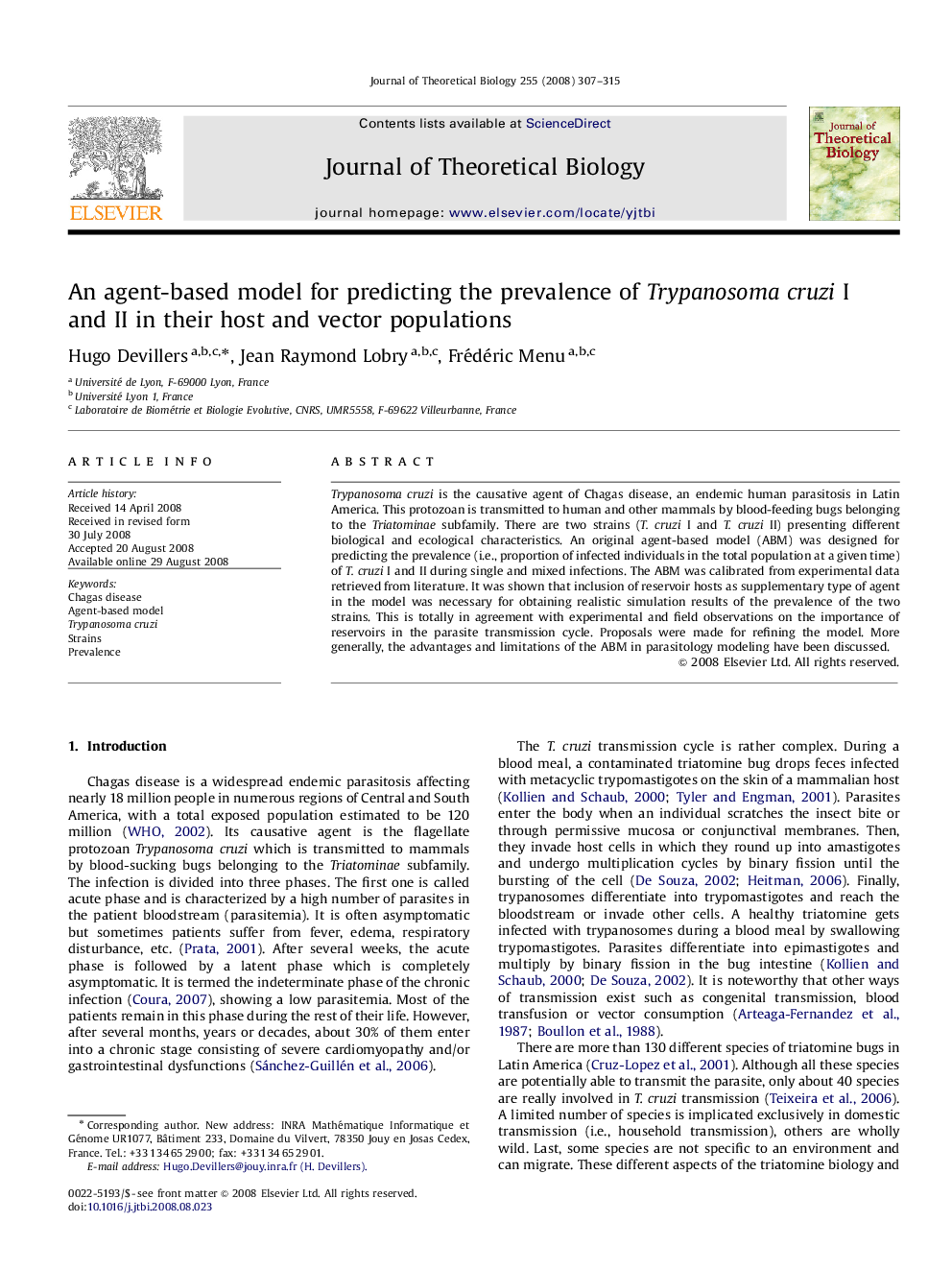| Article ID | Journal | Published Year | Pages | File Type |
|---|---|---|---|---|
| 4498200 | Journal of Theoretical Biology | 2008 | 9 Pages |
Trypanosoma cruzi is the causative agent of Chagas disease, an endemic human parasitosis in Latin America. This protozoan is transmitted to human and other mammals by blood-feeding bugs belonging to the Triatominae subfamily. There are two strains (T. cruzi I and T. cruzi II) presenting different biological and ecological characteristics. An original agent-based model (ABM) was designed for predicting the prevalence (i.e., proportion of infected individuals in the total population at a given time) of T. cruzi I and II during single and mixed infections. The ABM was calibrated from experimental data retrieved from literature. It was shown that inclusion of reservoir hosts as supplementary type of agent in the model was necessary for obtaining realistic simulation results of the prevalence of the two strains. This is totally in agreement with experimental and field observations on the importance of reservoirs in the parasite transmission cycle. Proposals were made for refining the model. More generally, the advantages and limitations of the ABM in parasitology modeling have been discussed.
